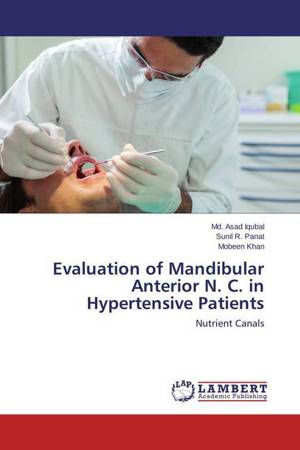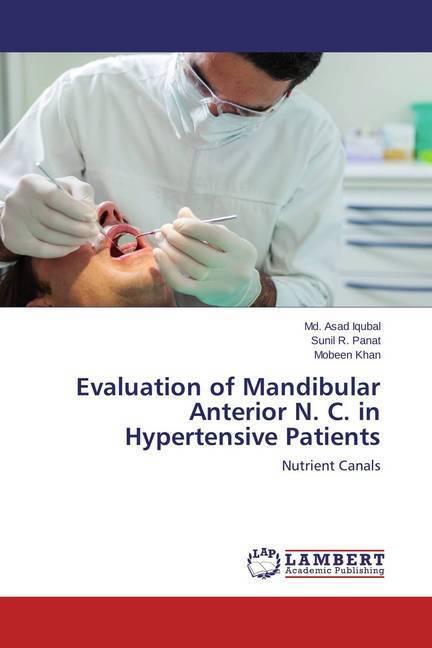
- Afhalen na 1 uur in een winkel met voorraad
- Gratis thuislevering in België vanaf € 30
- Ruim aanbod met 7 miljoen producten
- Afhalen na 1 uur in een winkel met voorraad
- Gratis thuislevering in België vanaf € 30
- Ruim aanbod met 7 miljoen producten
Zoeken
Evaluation of Mandibular Anterior N. C. in Hypertensive Patients
Nutrient Canals
Md. Asad Iqubal, Sunil R. Panat, Mobeen Khan
Paperback | Engels
€ 39,45
+ 78 punten
Omschrijving
High blood pressure is a trait, as opposed to a specific disease, and represents a quantitative rather than a qualitative deviation from the norm. In hypertensive patients nutrient canals are clearly visible and appear more frequently. Radiolucencies that appear to represent spaces in bone through which blood vessels and nerves travel to supply surrounding structures have been termed as nutrient canals. Nutrient canals have also been called inter-dental canals, circulatory canals, vascular channels or inter-dental nutrient canals. Nutrient canals are tube-like conduits seen in the alveolar bone that contain neurovascular elements that supply teeth and supporting structures. These anatomical structures are frequently seen as fine linear, curvilinear, or circular radiolucencies situated within the interproximal alveolar bone or inferior to root apices. Nutrient canals are found throughout the maxillary and mandibular alveolar processes. Nutrient canals appear most frequently on the intraoral radiographs of the mandibular anterior region, followed by the mandibular premolar area, the maxillary premolar area, and the wall of the maxillary sinus.
Specificaties
Betrokkenen
- Auteur(s):
- Uitgeverij:
Inhoud
- Aantal bladzijden:
- 76
- Taal:
- Engels
Eigenschappen
- Productcode (EAN):
- 9783659392078
- Uitvoering:
- Paperback
- Afmetingen:
- 150 mm x 220 mm

Alleen bij Standaard Boekhandel
+ 78 punten op je klantenkaart van Standaard Boekhandel
Beoordelingen
We publiceren alleen reviews die voldoen aan de voorwaarden voor reviews. Bekijk onze voorwaarden voor reviews.











